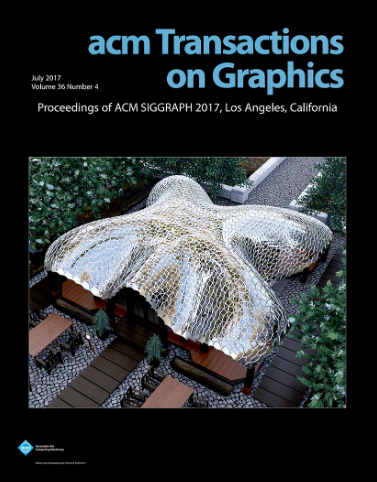单镜头HDR使用传统的图像传感器快门功能和光学随机化
IF 9.5
1区 计算机科学
Q1 COMPUTER SCIENCE, SOFTWARE ENGINEERING
引用次数: 0
摘要
高动态范围(HDR)成像是克服图像传感器动态范围限制的关键技术。经典的方法依赖于多次曝光,这会减慢捕捉时间,导致在成像动态场景时产生运动伪影。单镜头HDR成像通过在单次曝光中编码HDR数据,然后计算恢复它来缓解这个问题。许多已建立的方法使用强图像先验来恢复曝光不当的细节;这些方法与扩展的高光区域作斗争。在这项工作中,我们展示了一种新的单镜头HDR捕捉方法,该方法利用了现成传感器中常见的全局复位释放(GRR)快门模式。GRR快门模式对靠近传感器底部的行应用较长的曝光时间。我们使用光学元件将随机排列的图像传递到传感器上,有效地在整个场景中创建空间随机曝光。由此产生的曝光多样性使我们能够通过解决一个简单的总变化图像先验的优化问题来恢复HDR数据。在模拟中,我们证明了当许多传感器像素饱和时(10 \(\% \)或更多),我们的方法优于其他单镜头方法,并且在适度饱和时具有竞争力(1 \(\% \))。最后,我们演示了一个物理实验室原型,该原型使用现成的随机光纤束进行光洗牌。光纤束耦合到一个低成本的商用传感器在GRR快门模式下工作。我们的原型使用具有48dB动态范围的8位传感器实现了高达73dB的动态范围。本文章由计算机程序翻译,如有差异,请以英文原文为准。
Single-shot HDR using conventional image sensor shutter functions and optical randomization
High-dynamic-range (HDR) imaging is an essential technique for overcoming the dynamic range limits of image sensors. The classic method relies on multiple exposures, which slows capture time, resulting in motion artifacts when imaging dynamic scenes. Single-shot HDR imaging alleviates this issue by encoding HDR data in a single exposure, then computationally recovering it. Many established methods use strong image priors to recover improperly exposed detail; these approaches struggle with extended highlight regions. In this work, we demonstrate a novel single-shot HDR capture method that utilizes the global reset release (GRR) shutter mode commonly found in off-the-shelf sensors. GRR shutter mode applies a longer exposure time to rows closer to the bottom of the sensor. We use optics that relay a randomly permuted (shuffled) image onto the sensor, effectively creating spatially randomized exposures across the scene. The resulting exposure diversity allows us to recover HDR data by solving an optimization problem with a simple total variation image prior. In simulation, we demonstrate that our method outperforms other single-shot methods when many sensor pixels are saturated (10 \(\% \) or more), and is competitive at modest saturation (1 \(\% \) ). Finally, we demonstrate a physical lab prototype that uses an off-the-shelf random fiber bundle for the optical shuffling. The fiber bundle is coupled to a low-cost commercial sensor operating in GRR shutter mode. Our prototype achieves a dynamic range of up to 73dB using an 8-bit sensor with 48dB dynamic range.
求助全文
通过发布文献求助,成功后即可免费获取论文全文。
去求助
来源期刊

ACM Transactions on Graphics
工程技术-计算机:软件工程
CiteScore
14.30
自引率
25.80%
发文量
193
审稿时长
12 months
期刊介绍:
ACM Transactions on Graphics (TOG) is a peer-reviewed scientific journal that aims to disseminate the latest findings of note in the field of computer graphics. It has been published since 1982 by the Association for Computing Machinery. Starting in 2003, all papers accepted for presentation at the annual SIGGRAPH conference are printed in a special summer issue of the journal.
 求助内容:
求助内容: 应助结果提醒方式:
应助结果提醒方式:


